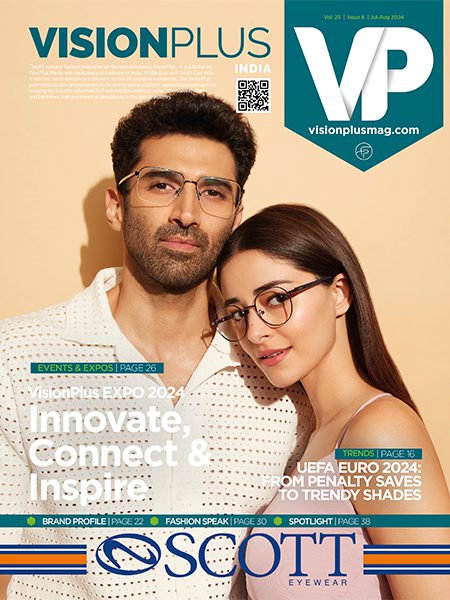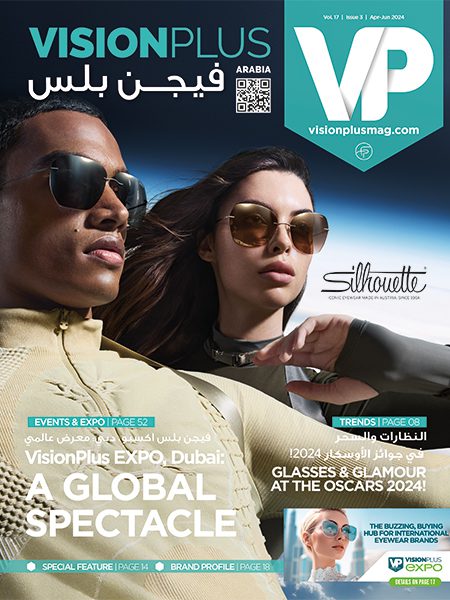

Classicism It’s Forever…
What exactly defines a ‘classic’ frame? A lot of us might use the word without really being sure if it’s being used in the right context or for the right product. Milica Jojic helps us understand what’s it about classics that these styles stay timeless
I’ve been hearing lately that “the 90s are back!” History repeats itself. Fashion is one big cycle. We take something we love - a color, a design, a pattern, or a crop – and we run with it until we’re basically sick of it. And “we” are not even the ones deciding on what we like. Just like the famous scene from “The Devil Wears Prada,” where Andy doesn’t recognize the importance of a “blue” sweater, and Miranda is quick to explain its significance, trends are decided for us. We are encouraged to keep up with them, buy the newest pieces, refresh our wardrobe each season and stay “in style.”
Sometimes, when we’re late to the party, we don’t even know we’re keeping up with these trends. Truth be told, I watch these closely and I like having fashionable pieces, but I always go for what aligns with my personal style. I know what I’m comfortable with and I usually don’t experiment too much. This revelation about myself has inspired me to write about classicism – the constants in fashion, the trends that never go out of style.
Classicism – an aesthetic dependent on principles based in the culture, art, and literature of ancient Greece and Rome, with an emphasis on form, simplicity, proportion, clarity of structure, perfection & restrained emotion.

The eyewear industry, as part of the fashion industry, is undoubtedly impacted by new trends. Consumers went from wearing thick, cat-eye frames to thin, round ones in no time. We went from wearing oversized frames to tiny ones within a season.
We went from flamboyant and decorated frames to sleek, solid-colored ones. And we probably did not even notice this transition. You logged onto social media one day and everyone had them. The next thing you knew, they were in all the magazines and stores, and slowly but surely you wanted to have them too.
The past two years, during the pandemic and in this period that we can hopefully call “after the pandemic,” a lot has happened in consumers’ lives. For a moment in time, the world came to a stand-still and we haven’t been the same since. In one of the previous articles, I mentioned how the eyewear industry has changed as a result of the pandemic. These changes, emphasized mostly from the industry perspective, showed how important it was to focus on classicism.
In difficult times, times of hardship, turmoil, and uncertainty in the world, keeping up with trends is not a priority. Fashion trends almost become background noise to everything that is happening and although they can be a useful distraction from things we do not want to face, they are far from important.
However, choosing eyewear is frequently a necessity. No matter what is happening globally - in the world, or personally – in our lives, we need optical frames. Here lies the complexity of the eyewear industry: it is situated between the essential and the complementary. The eyewear industry has to have the core offer, a classic one that never goes out of style and a more short-lived, modern one that will last a season.


About a year ago, I got an optical frame from Denon Eyewear. It was a roundish, tortoise frame called Phoenix. And then about two weeks ago, I got another one called Dallas. It’s an oversized, square frame with the most subtle outline. These frames are very different in their design: one is acetate, the other is titanium, one is tortoise, the other is silver, but they have one thing in common: they are both classics. Now who decides what classics are? I certainly don’t, which is why I’ve asked for some guidance from an expert, Joseph Tallier,
owner, and founder of Denon Eyewear.
“Classicism is about universally flattering frames, a small selection of round, rectangle, square, oval and cat eye shapes, available in neutral colors such as black, beige, gray, silver/gold, and more exciting combinations in the eyewear industry such as tortoise and marble patterns.
If you think of every fashion era, you can be sure the eyewear industry has taken notes from each one. And interestingly enough, although a certain style from each era has transitioned into a classic, it’s not always the most popular ones that stick.”
There we have it, in the simplest terms possible, classicism is a collection of trends that have stood the test of time. These frames will continue to sell decades from now because they are what consumers look for in eyewear.
I did preface this by saying I like to keep up with fashion trends, but I can say with conviction that I have never purchased a “trendy”
optical piece.
Not only is it short-lived, but I want my optical frames to go with my daily outfits as much as my more dressed up ones. Sunglasses, on the other hand, might be a different story for some. However, for me, they lead by the same principle. A retro round frame and an aviator one are two styles I can never go wrong with.
During this more difficult time, as we recover from the pandemic, enter into a recession and are faced with inflation, consumers want to see eyewear that stands the test of time – design, quality and durability-wise.









